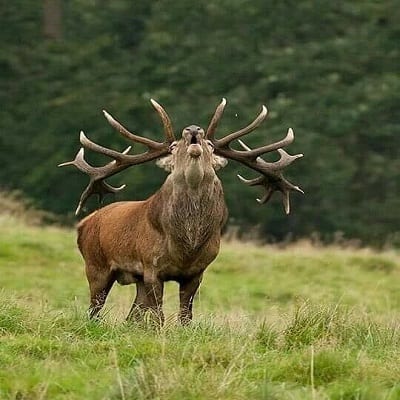Full Moon Day occurs when the Sun, Earth, and the Moon are perfectly aligned in a straight line i.e the sun and the moon are separated by 180 degrees. Full Moon Day is the third phase of the four primary phases of the moon (the other three phases are – New Moon Day, First Quarter Moon, and, Third Quarter Moon). Only on a full moon, a lunar eclipse (Chandra Grahan) can occur. In India, Full moon day is also known as Purnima or Poornima. Full moon day comes 12 times (sometimes 13) in a calendar year. Out of 12 full moons, in this article, we will talk about Buck Moon – The Season Of Buck’s Happiness.
see also, What Is Waxing Gibbous Moon?
What Is A Buck Moon?
 |
| Credit: Shutterstock |
Believe it or not, those Native American tribal people used the lunar calendar (rather than using the solar calendar or Georgian Calendar) to understand the pattern of changing seasons. And with time, by seeing the patterns that how Bucks behave, they understood that the full moon in July marks the emergence of new antlers on Buck’s forehead: Hence named it Buck Moon – The Season Of Buck’s Happiness.
see also, Why Earth’s Axial Tilt Is The Reason For Change In The Season?
Buck Moon – The Season Of Buck’s Happiness
 |
| Two Sambar Deers Fighting To Show Their Dominance Credit: Wikimedia Commons |
I know that the readers would be wondering that why named Buck moon – The Season Of Buck Happiness. The antlers of Buck or Male Deer basically signifies their strength and influence their female mate selection. During male to male competition, bucks use antlers to justify their dominance. On the other hand, antlers display their fertility competitiveness. The larger the size of antlers of Male Deer, the larger will be their chance of sexual display during mating season. That’s why named Buck Moon – The Season Of Buck’s Happiness.
Other Names For Buck Moon
Although, the Full Buck Moon is the most commonly used name, yet this full moon in July has so many different Full moon names depending on the place and their related culture. In European culture, this July full moon is known as Thunder Moon because this full moon marks the arrival of frequent thunderstorms. On the other hand, for Anglo-Saxon people, this month’s full moon is known as Hay Moon; as for farmers, it indicates that the time has come to cut and gather herbs and essential for winter utilization.
Check out, First Full Moon in October 2020: Harvest Moon or Hunter’s Moon?

Very interesting and informative…
Thank you so much.
Thankyou. Keep supporting us